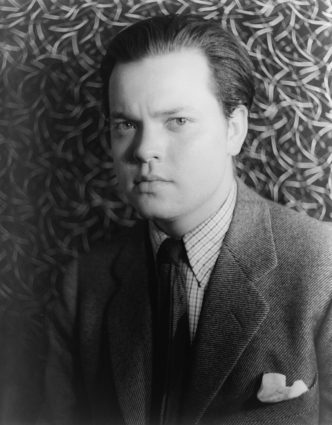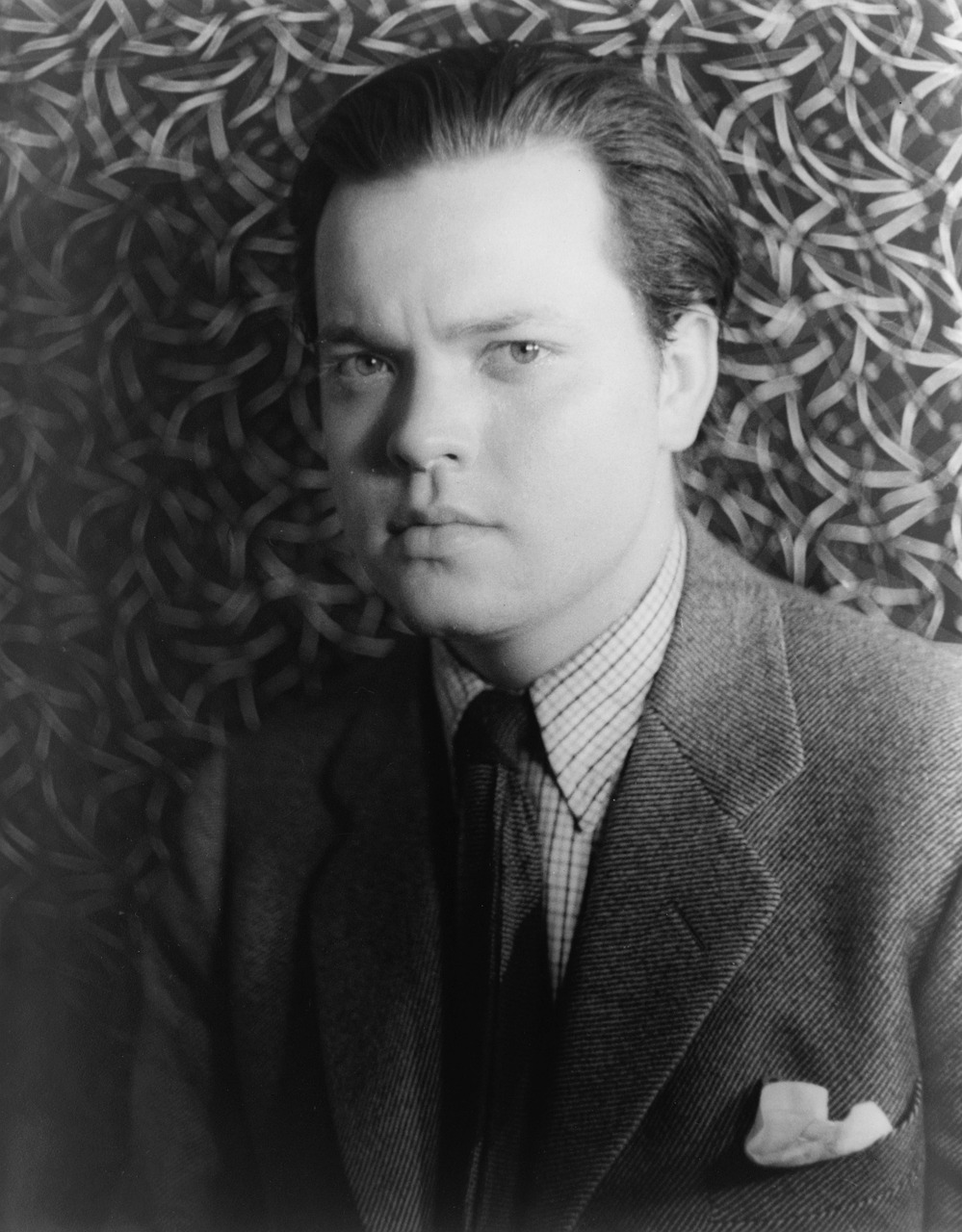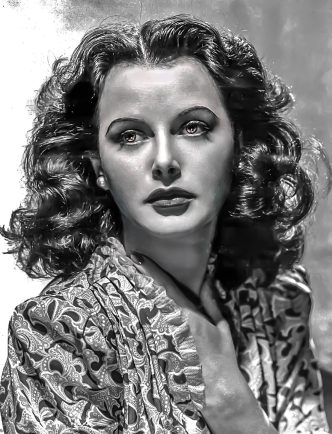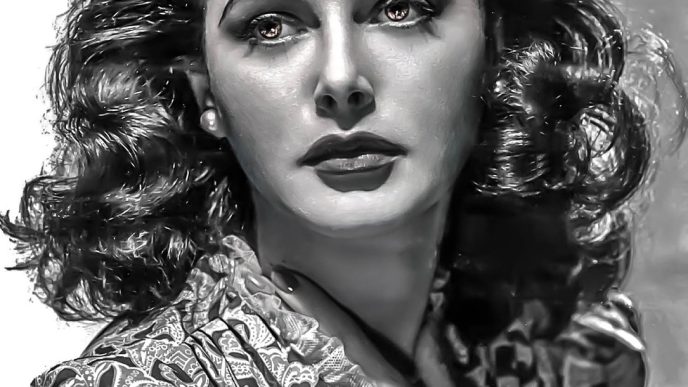Orson Welles was a force of nature who arrived in Hollywood not as an apprentice, but as a conqueror. Acknowledged as a child virtuoso in music, art, and drama, he was a prodigy who had already mastered the stage and radio before he ever stepped behind a camera.
His career is the story of a monumental talent clashing with the rigid, factory-like structure of the Hollywood studio system—a battle between a singular artistic vision and the commercial demands of an industry. Remembered for his revolutionary work in film, radio, and theatre, Welles is considered one of the most influential filmmakers of all time, the “ultimate auteur” whose innovations in narrative, sound, and cinematography forever changed the language of cinema. His story is not just one of genius, but a cautionary tale of the price of uncompromising artistry.
The Rise of a Prodigy: From Theatre to “The War of the Worlds”
Born George Orson Welles in 1915, his prodigious talents were recognized early. Following the death of his parents, his guardian Dr. Maurice Bernstein supported his artistic pursuits, which led him to the stage. After a successful acting tour in Dublin at the age of sixteen, Welles arrived in New York, where his meteoric rise began. In 1937, he and producer John Houseman founded the Mercury Theatre, an independent repertory company that quickly became famous for its bold and original productions. Their modern-dress staging of Shakespeare’s Julius Caesar, set in a contemporary fascist state, was a critical triumph that established Welles as a visionary director.
Concurrently, Welles was a dominant force in radio, where his distinctive baritone voice became instantly recognizable. He worked extensively as an actor, writer, and director, pioneering techniques that stretched the boundaries of the medium, including the inventive use of narration to heighten narrative immediacy. This culminated in the legendary October 30, 1938, broadcast of The War of the Worlds. The radio play, presented as a series of simulated news bulletins, was so realistic that it reportedly caused widespread panic among listeners who believed a Martian invasion was actually underway. The broadcast made Welles an international celebrity overnight and proved his unparalleled ability to manipulate a medium to create a powerful, immersive experience.
The Unprecedented Deal: Hollywood and the Creation of Citizen Kane
The notoriety from The War of the Worlds brought Hollywood calling, and RKO Pictures offered Welles a contract unlike any other. He was given almost total artistic control over his projects—including the right to the final cut—a level of freedom that was unheard of for a first-time director in the studio era. The result of this unprecedented deal was Citizen Kane (1941), a film Welles co-wrote, directed, produced, and starred in, and which is now widely regarded as one of the greatest films ever made.
Citizen Kane was a cinematic revolution. Welles abandoned traditional linear storytelling, instead structuring the film as a puzzle, piecing together the life of the enigmatic newspaper tycoon Charles Foster Kane through the fragmented and conflicting memories of those who knew him. This layered narrative explored complex themes of power, media manipulation, the corrupting influence of wealth, and the hollow promise of the American Dream.
Working with cinematographer Gregg Toland, Welles pioneered a host of visual innovations. Most famously, they made extensive use of “deep focus,” a technique that keeps every plane of the image in sharp focus, allowing for complex compositions where actions could unfold simultaneously in the foreground and background. This was combined with dramatic, high-contrast lighting (chiaroscuro), unconventional low-angle shots that made characters loom large, and a sophisticated sound design drawn from his radio work that used overlapping dialogue and sonic transitions to create a dense, realistic atmosphere.
The System Strikes Back: The Struggle for Artistic Control
While Citizen Kane was a critical masterpiece, its controversial subject matter (widely seen as a thinly veiled portrait of newspaper magnate William Randolph Hearst) and its unconventional style led to a relative commercial failure. This marked the end of Welles’s absolute freedom. His next film, The Magnificent Ambersons (1942), a dark and melancholic look at a wealthy family’s decline, was taken from him by RKO while he was in South America filming another project. The studio, unnerved by a bleak test screening, cut over 40 minutes from the film and shot a new, happier ending, a mutilation from which Welles’s career never fully recovered.
This conflict defined the rest of his time in Hollywood. Studio heads, who ran their “dream factories” with an emphasis on mass-producing profitable, formulaic pictures, saw Welles as uncooperative, financially irresponsible, and dangerously uncommercial. His next project for RKO, It’s All True, was sabotaged by studio politics and ultimately shut down, leading to his dismissal. Welles became a leading voice in the Society of Independent Motion Picture Producers (SIMPP), an organization that included Charlie Chaplin and Walt Disney, which fought against the monopolistic studio practices that stifled artistic freedom.
Exile and Endurance: A Career in Europe
Branded as an erratic and difficult filmmaker, Welles left Hollywood for Europe in 1949. For the remainder of his career, he became a truly independent filmmaker, financing his own projects by taking acting roles in other directors’ films. Despite constant financial struggles, he continued to produce masterpieces. Touch of Evil (1958), his last American studio film, was another brilliant work that was re-edited by the studio against his wishes. In Europe, he created films like Chimes at Midnight (1966), considered by many to be his most personal and moving work.
Conclusion: The Enduring Legacy of an Auteur
Orson Welles’s career is a testament to the power of a singular artistic vision. His baroque style and pioneering techniques—from the narrative complexity of Citizen Kane to the immersive soundscapes of his radio dramas—fundamentally reshaped the possibilities of storytelling. He inspired generations of filmmakers to challenge convention, experiment with form, and use the camera not just to record reality, but to interpret it. Though his battles with the studio system left a trail of unfinished and compromised films, his influence is undeniable. He remains the ultimate auteur, a maverick genius whose defiant creativity cemented his legacy as one of cinema’s greatest and most important artists.
Read next: How Citizen Kane Changed the Language of Cinema →

Dario Loce is the founder and editor of Celebrimous. He is a lifelong film enthusiast and the author of several locally-published books on cinema history and analysis. His passion is deconstructing the “how” and “why” of filmmaking, from the director’s vision to the editor’s cut. When not lost in a classic film, he’s usually walking through the city, replaying scenes in his mind like unfinished stories.













